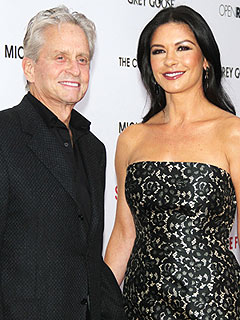NEW YORK — John O. Brennan’s testimony before the Senate Intelligence Committee on Thursday was representative of the Obama administration’s approach to counter-terrorism: right-sounding assurances with little transparency.
Mr. Brennan, the president’s choice to be the next head of the Central Intelligence Agency, said the United States should publicly disclose when American drone attacks kill civilians. He called water boarding “reprehensible” and vowed it would never occur under his watch. And he said that countering militancy should be “comprehensive,” not just “kinetic,” and involve diplomatic and development efforts as well.
What any of that means in practice, critics say, remains unknown.
Mr. Brennan failed to clearly answer questions about the administration’s excessive embrace of drone strikes and secrecy.
He flatly defended the quadrupling of drone strikes that has occurred on President Obama’s watch. He gave no clear explanation for why the public has been denied access to Justice Department legal opinions that give the president the power to kill U.S. citizens without judicial review. And his statement that the establishment of a special court to review the targeting of Americans was “worthy of discussion” was noncommittal.
Before the hearing administration officials defended the career CIA officer who has served as the president’s chief counter-terrorism adviser throughout his first term. A senior administration official who asked not be named said that Mr. Brennan has actively worked to reduce drone attacks and increase transparency.
Officials described him as a traditionalist who would move the CIA away from the paramilitary attacks that have come to define its mission since 2001. Instead, the agency would move back to espionage and hand over lethal strikes, including drone attacks, to the military’s Special Operations forces.
Over the last two years, drone strikes in Pakistan have, in fact, decreased by nearly two-thirds from a peak of 122 in 2010 to 48 last year, according to The New American Foundation. At the same time, strikes in Yemen have increased, killing an estimated 400 people including 80 civilians.
From his office in the basement of the White House, Mr. Brennan has been at the center of it all. Daniel Benjamin, who recently stepped down as the State Department’s top counterterrorism official, told the New York Times this week that Mr. Brennan had sweeping authority.
“He’s probably had more power and influence than anyone in a comparable position in the last 20 years,” said Mr. Benjamin. “He’s had enormous sway over the intelligence community. He’s had a profound impact on how the military does counterterrorism.”
Some former military and intelligence officials have warned that the administration’s drone strikes have shifted from an attempt to only target senior militants to a de facto bombing campaign against low-level fighters. They say such a policy creates high levels of public animosity toward the United States with questionable results.
In a recent interview with Reuters, retired Gen. Stanley McChrystal, the former commander of American forces in Afghanistan, said drones were useful tools, but they are “hated on a visceral level” in many countries and contribute to a “perception of American arrogance.”
In Thursday’s hearing, Mr. Brennan showed an awareness of how excessive use of force can be counterproductive. He also aggressively defended the need for the United States to abide by the rule of law, a vital practice if the US is going to ever gain popular support in the region.
In one of his strongest moments, Mr. Brennan flatly rejected suggestions by Senator Marco Rubio of Florida that U.S. officials should have pressured Tunisian officials to improperly detain a suspect in the fatal attack on the U.S. consulate in Benghazi, Libya. Mr. Brennan said Tunisian officials had no evidence linking the man to the incident.
“Senator, this country needs to make sure we are setting an example and a standard for the world,” he said, adding that Washington had to “respect the rights of these governments to enforce their laws independently.”
Mr. Brennan also argued that opponents of the program misunderstood it. He said the United States only used drone strikes as a “last resort,” and the administration goes through “agony” before launching drone strikes in order to avoid civilian casualties.
In truth, the administration’s insistence on keeping the drone program secret fuels public suspicion. Declaring a program “covert” when it is reported on by the global media on a daily basis is increasingly absurd: as Joshua Foust, an analyst and former U.S. intelligence official, has argued, keeping the program secret cedes the debate to critics who say the strikes only kill vast numbers of civilians.
It is easy to see why many analysts say the United States should continue to carry out drone strikes – they are a military necessity – but keep them to a minimum. And details such as why an attack is carried out, who is killed and any civilian casualties should be publicly disclosed.
Mr. Brennan’s statement that drone strikes have decimated al Qaeda’s core leadership in Pakistan’s tribal areas was largely accurate. But despite the increase in strikes under Mr. Obama, the attacks have failed to do the same to the Afghan and Pakistani Taliban operating out of the same area. Drone strikes will never be a silver bullet. They have created a stalemate in Pakistan, weakening militant groups but not eliminating them.
After the hearing, Sen. Dianne Feinstein, the Democratic chair of the Senate Intelligence Committee, said she was considering drafting legislation that would create a special court to review requests by the president to target Americans under certain circumstances. The new body would be similar to the court that currently reviews government requests to wiretap citizens.
Critics point out that the Obama administration has a long record of promising transparency and then embracing secrecy — from drone strikes to legal memos to unprecedented prosecutions of government officials for leaking to the news media.
Overall, Mr. Brennan impressed those watching yesterday. We will see if he moves the CIA and the administration toward greater transparency. What he and the president plan remains secret.
David Rohde is a columnist for Reuters, former reporter for The New York Times and two-time winner of the Pulitzer Prize. His forthcoming book, “Beyond War: Reimagining American Influence in a New Middle East” will be published in March 2013.












